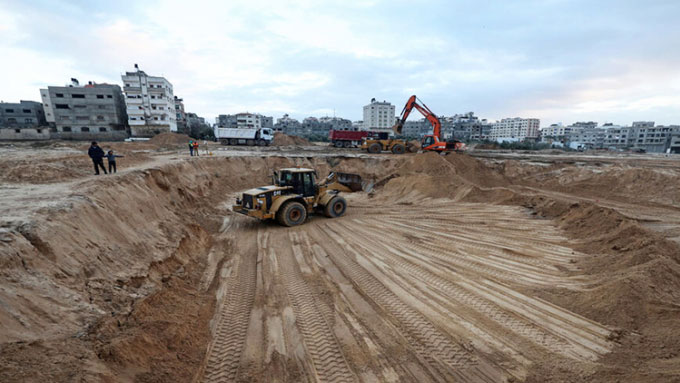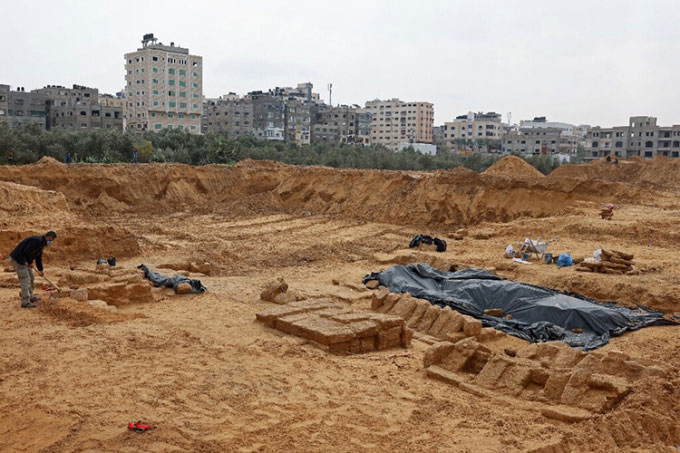Construction workers accidentally discovered a series of ancient Roman tombs in Beit Lahia, northern Gaza Strip.

Construction site where dozens of ancient tombs were discovered in Gaza Strip. (Photo: AFP)
In a statement on February 21, authorities reported that 31 tombs dating back to the first century AD were found when bulldozers were excavating for an Egyptian-funded housing project in Beit Lahia.
The Gaza Ministry of Tourism and Antiquities sent a team of experts to the site to catalog and study the tombs and artifacts. Initial analysis suggests that they may be part of a cemetery associated with the nearby Roman excavation site in Balakhiya.
Inside the tombs, the archaeological team discovered numerous coffins, pottery, and inscriptions indicating that the cemetery existed from the ancient Roman Empire through the Byzantine period or the Eastern Roman Empire.

Some of the tombs excavated at the site. (Photo: AFP)
Although the cemetery covers only a small area, it suggests the presence of other artifacts or an entire surrounding area. During the Byzantine period, cemeteries were often built close to communities so that they could maintain contact with the deceased—individuals who were highly valued according to the beliefs and culture of that time.
The Gaza Strip is one of the oldest inhabited places on Earth and is home to around 18 civilizations throughout history. “This area is filled with unexplored artifacts, but it requires projects with enormous funding, as well as special tools for excavation,” said Palestinian historian Ghassan Wishah, head of the Department of History and Archaeology at the Islamic University of Gaza, in an interview with Al-Monitor.


















































